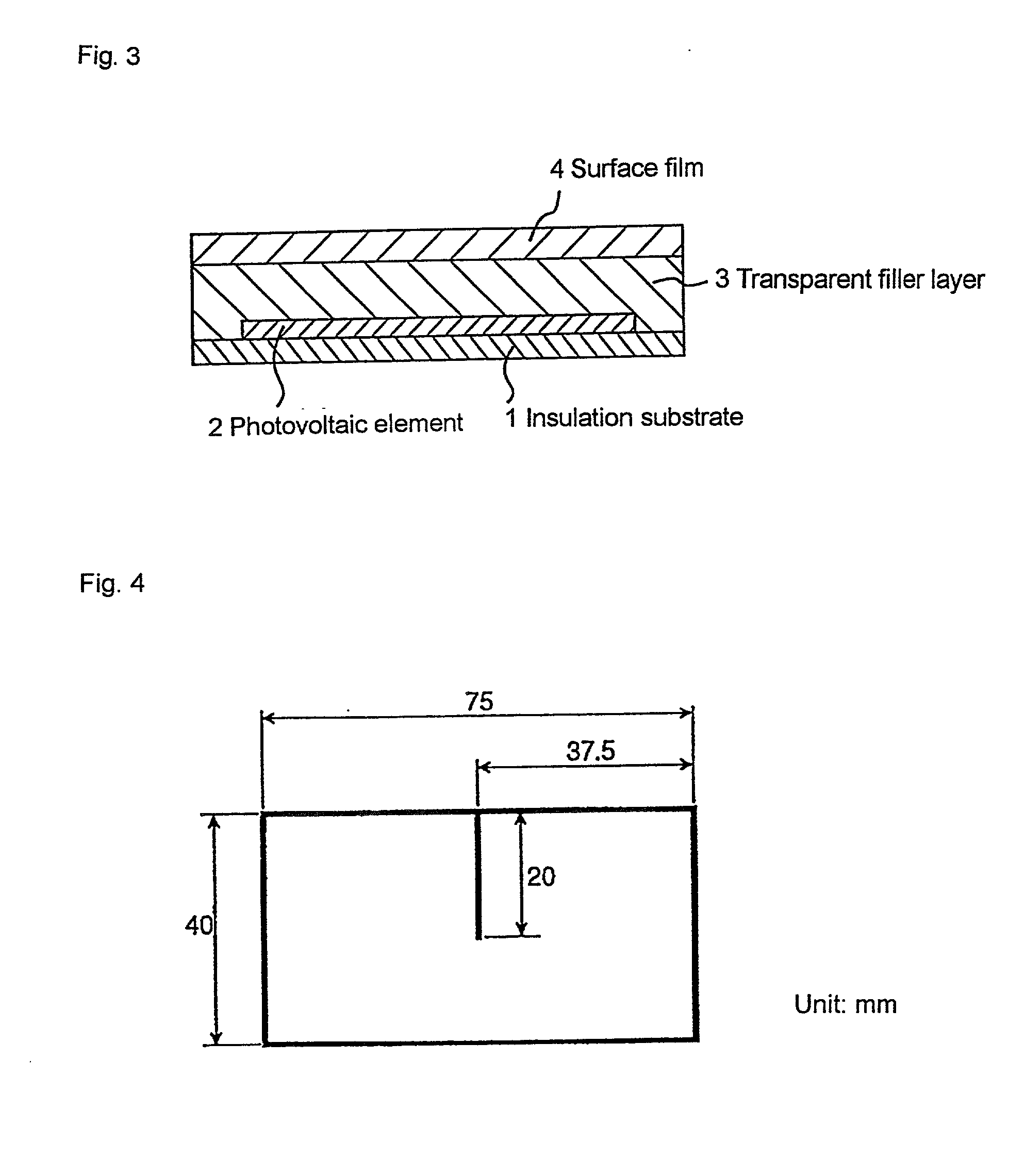Tetrafluoroethylene copolymer and use thereof
- Summary
- Abstract
- Description
- Claims
- Application Information
AI Technical Summary
Benefits of technology
Problems solved by technology
Method used
Image
Examples
example 1
[0188] Deoxidized water (1 liter) was charged in a glass-lined 4 liter autoclave, and the autoclave was evacuated. Then, perfluorocyclobutane (400 g) and hexafluoropropylene (800 g) were charged in the autoclave, and the interior temperature and an agitation speed were maintained at 35.degree. C. and 580 rpm, respectively. Thereafter, CH.sub.2=CF(CF.sub.2).sub.3H (2.0 g) and cyclohexane (1.5 g) were charged, and then the mixed gas of tetrafluoroethylene, ethylene and perfluorocyclobutane (molar ratio of 78.9:16.6:4.5) was supplied to pressurize the autoclave to 12 kgf / cm.sup.2 G.
[0189] After that, di-n-propyl peroxydicarbonate (8.0 g) was charged to initiate the polymerization. As the polymerization proceeded, the pressure dropped. Thus, the mixed gas of tetrafluoroethylene, ethylene and perfluorocyclobutane (molar ratio of 52.8:42.7:4.5) was additionally supplied under pressure, and the polymerization was continued while maintaining the pressure at 12 kgf / cm.sup.2 G, during which C...
example 2
[0191] Polymerization was carried out in the same manner as in Example 1 except that the amount of cyclohexane was changed to 0.85 g, and no di-n-propyl peroxydicarbonate was additionally added in the course of the polymerization. After 11 hours of the polymerization, a powdery polymer (137 g) was obtained. The properties of the obtained polymer are shown in Table 1.
example 3
[0192] Polymerization was carried out in the same manner as in Example 1 except that the initially charged amounts of perfluorocyclobutane and hexafluoropropylene were changed to 600 g and 600 g, respectively, and the amount of cyclohexane was changed to 1.6 g, and the amount of di-n-propyl peroxydicarbonate was changed to 10.0 g. After 8 hours of the polymerization, a powdery polymer (153 g) was obtained. The properties of the obtained polymer are shown in Table 1.
PUM
| Property | Measurement | Unit |
|---|---|---|
| Weight | aaaaa | aaaaa |
| Angle | aaaaa | aaaaa |
| Angle | aaaaa | aaaaa |
Abstract
Description
Claims
Application Information
 Login to View More
Login to View More - R&D
- Intellectual Property
- Life Sciences
- Materials
- Tech Scout
- Unparalleled Data Quality
- Higher Quality Content
- 60% Fewer Hallucinations
Browse by: Latest US Patents, China's latest patents, Technical Efficacy Thesaurus, Application Domain, Technology Topic, Popular Technical Reports.
© 2025 PatSnap. All rights reserved.Legal|Privacy policy|Modern Slavery Act Transparency Statement|Sitemap|About US| Contact US: help@patsnap.com



